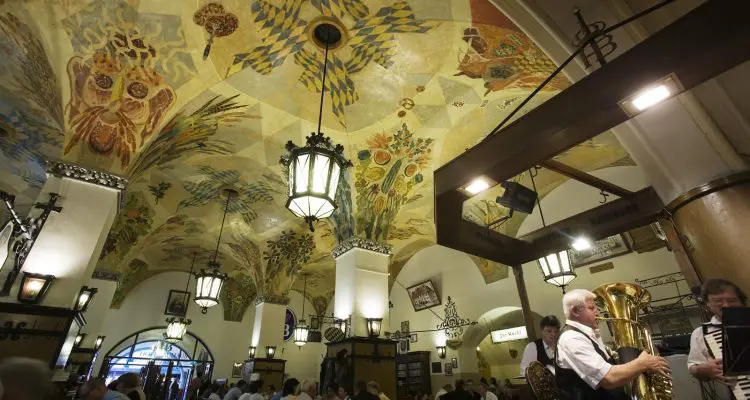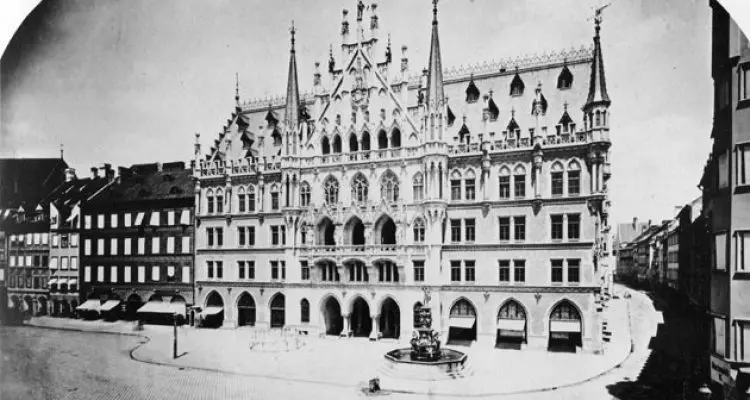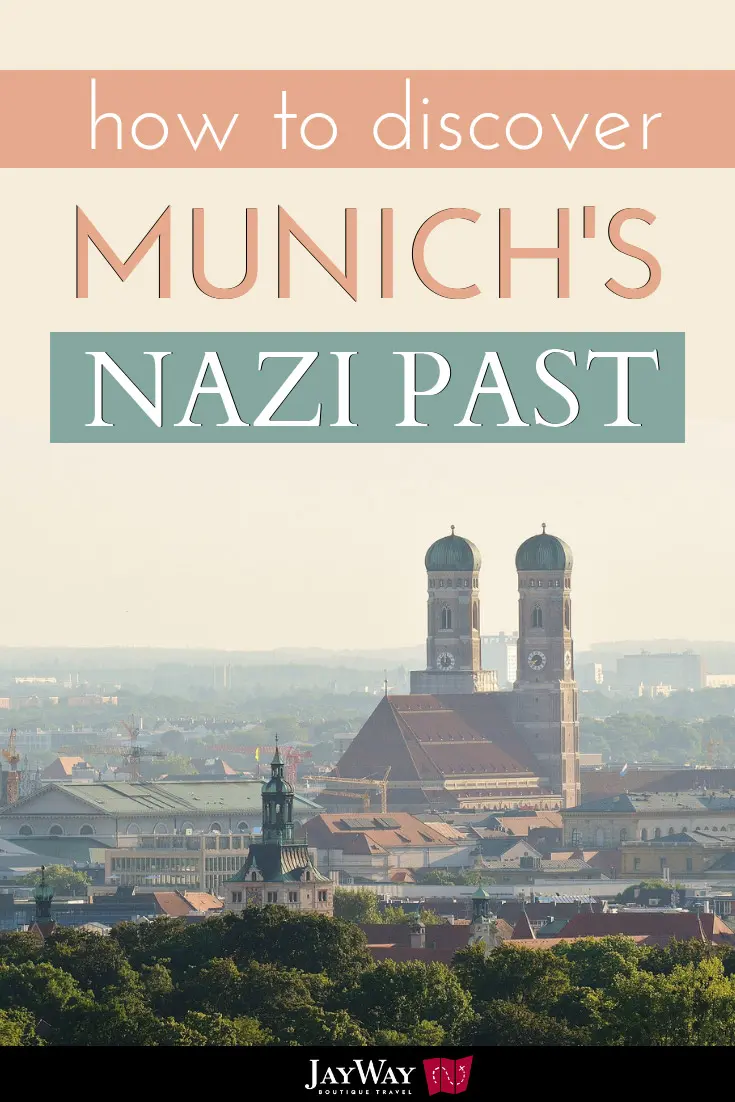With its banks, factories and business centers, Munich may at first appear staid and stable. But the city has a volatile past, especially during the years when Hitler and his Nazi Party began their first violent grabs for power. From the beer halls where he gathered his supporters to the Town Hall where Goebbels inaugurated Kristallnacht with an unhinged speech, it’s easy to discover Nazi Munich if you know where to look (and even better if you have a knowledgeable local guide). So here’s our guide to Nazi Munich, featuring some of the most signifiant sites in this chapter of the city’s past.
Jump to a section of this article
Hitler’s Beer Halls

Considering Hitler was notoriously a teetotaller, you might be surprised to learn that the Nazis actually got their start in some of Munich’s most famous beer halls. At least one of these historic institutions is still standing. The Hofbräuhaus am Platzl was an early gathering place for Hitler and his supporters, where the alcohol only inflamed their misguided opinions. You can still visit this beer hall today, which has a friendly atmosphere you wouldn’t typically associate with a dictator. Another beer hall, the Bürgerbräukeller, was the site of “The Beer Hall Putsch,” an unsuccessful early attempt to seize power. After leaving the beer hall in a drunken state, a group of Hitler’s supporters attempted to storm the Bavarian Defence Ministry.
Königsplatz: Nazi Party Buildings

On the square known as Königsplatz, or “King’s Square,” you’ll find numerous Nazi Party buildings that look much the same today as they did during Hitler’s time. The Führerbau and the Ehrentempel are two of the most notable, but certainly not the only sites worth discovering. The first is the building where Hitler had his offices. This building is most famous for being the location where Hitler signed the peace agreement with Neville Chamberlin, which supposedly guaranteed “peace in our time.” Today the building hosts the University of Music and Performing Arts Munich. Ehrentempel was originally two temple sites constructed by the Nazis in the 1930s. These were destroyed by advancing American armies, though today you’ll find a plaque on the site.
16 Prinzregentenplatz: Hitler’s Address

From 1929 to 1945 Hitler lived periodically at 16 Prinzregentenplatz. Today the building is a police station so it’s not open for tours, but the facade looks very similar to the way it used to.
Old Town Hall

Munich’s Old Town Hall is one of the most impressive buildings in the center of the city and it also played an important role in the Nazi’s seizure of power. This is the place where Joseph Goebbels gave the speech that inspired Kristallnacht on November 9, 1938. A pogrom against Jews throughout Germany, Kristallnacht led to the destruction of many Jewish-owned businesses and the arrest of thousands of Jewish citizens. Kristallnacht, or “the night of broken glass,” is generally considered the start of the Final Solution and the Holocaust.
Haus der Kunst – the House of Art

The ‘House of German Art’ was Nazi Germany’s first monumental building project. It was designed by architect Paul Ludwig Troost who did not live to see its opening ceremony in 1937. At the cornerstone ceremony in 1933 the newly self-proclaimed fuhrer announced that Munich was the “Capital City of German Art”. This building was designed to hold the work of the National Socialist Party’s ideologically approved artists. Still in use as an arts venue, it has recently been refurbished and hosts temporary exhibitions of contemporary artists. The museum’s curator is renowned for his progressive programming too. Check the website for the current program and opening hours, at the time of writing that’s 10 AM – 8 PM daily, and till 10 PM on Thursdays. Entry isn’t cheap, but if you are in Munich on the first Thursday of the month, entry is free from 6 PM.
Outside of Town: Dachau Concentration Camp

Of the many picturesque towns and villages that lie on the outskirts of Munich, one of the prettiest is the old medieval town of Dachau. Just outside the town center can today be found enduring testimony to the evil that was born among the rustic charm. Here a major international memorial site stands on the grounds of the former concentration camp. Tours of the area are available, including the surviving original buildings, the museum exhibition center, and the cinema. There you will find an English language documentary film being screened. Under an hour from Munich by train, this is a harrowing and unforgettable day trip. If you are interested we can arrange a guided tour as part of your Central Europe vacation package.
Take a tour
If you’re vacationing with us, our Nazi Munich tour is a great way to see these sites and also listen to insightful commentary from an expert local guide about the Nazis in Munich.
Planning a vacation in Munich? We’d love to put together a German holiday package for you. Get in touch to find out more!

Photos in this post are sourced from the following:
https://commons.wikimedia.org/wiki/File:Munich_-_Hofbr%C3%A4uhaus_am_Platzl_-_0778.jpg
https://commons.wikimedia.org/wiki/File:Fb_lichthof_n.jpg
https://commons.wikimedia.org/wiki/File:Val_006_6.jpg
https://www.instagram.com/haus_der_kunst/
https://commons.wikimedia.org/wiki/File:Dachau_Concentration_Camp,_Dachau,_Germany.jpg?uselang=en-gb

Stephan Delbos is an internationally published writer and editor. Born in the US, he has lived, worked and traveled in Europe for a decade. He’s fond of oysters and arid martinis.